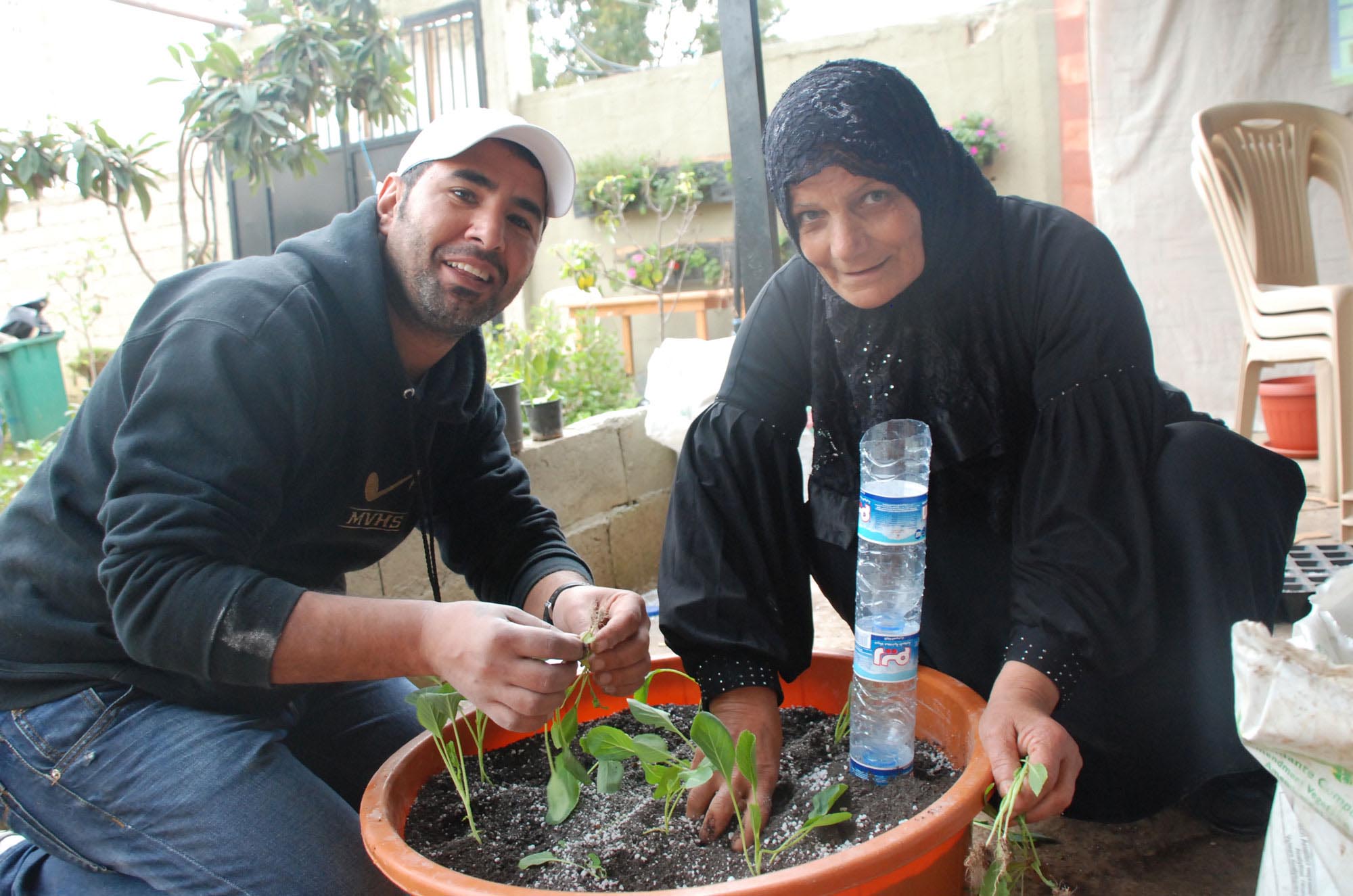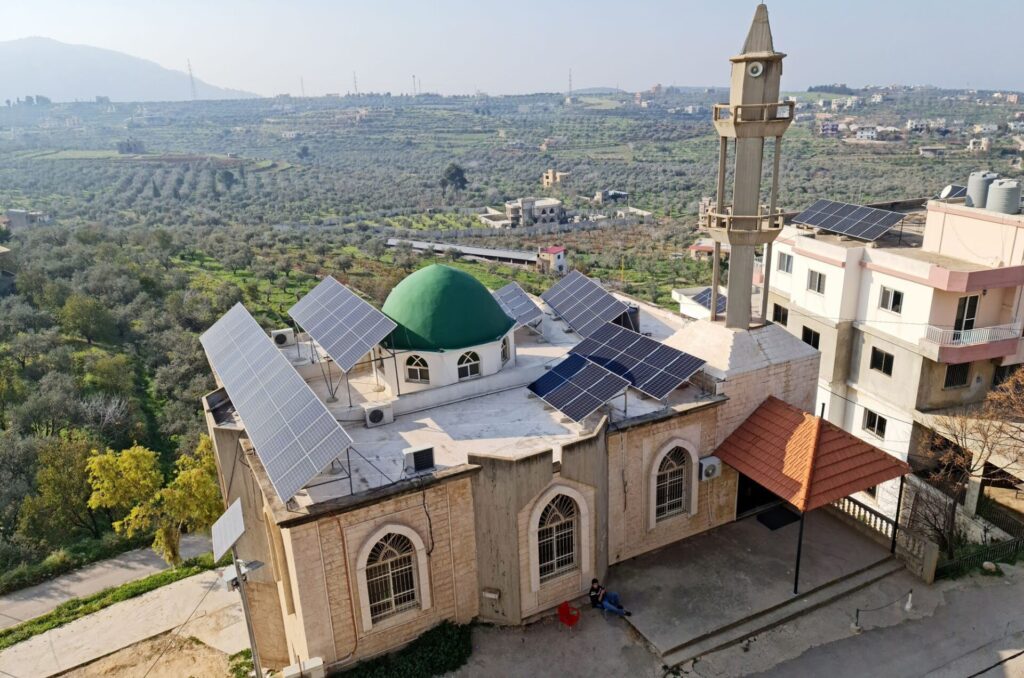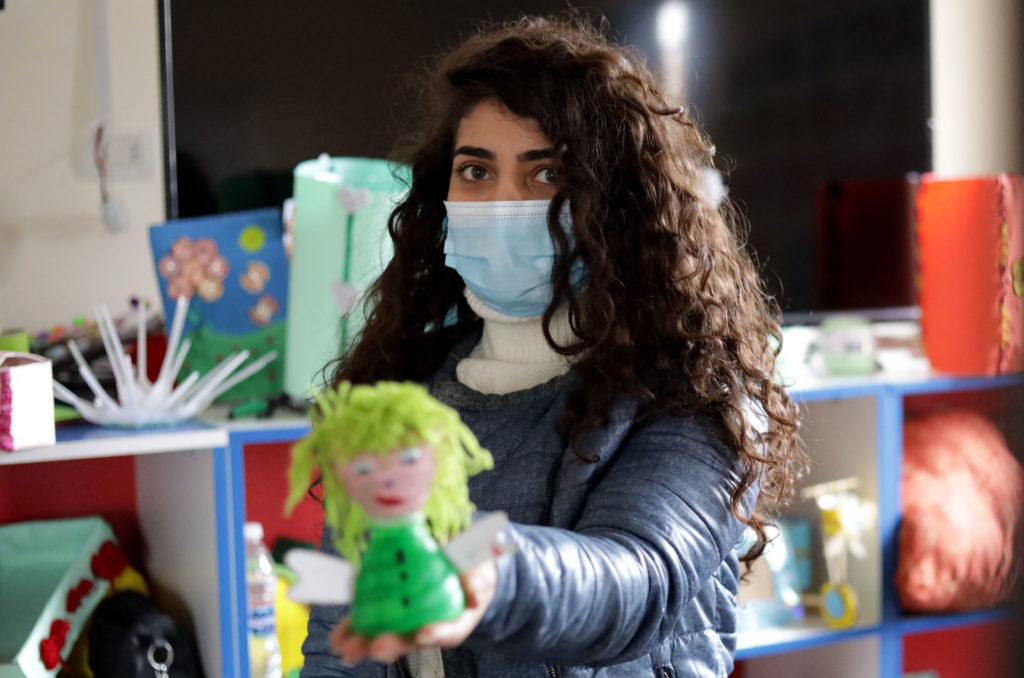Apr, 2013
Sobhieh Suleiman has finally moved back to her newly rebuilt home five years after fleeing the fighting that destroyed Nahr El Bared refugee camp in northern Lebanon.
But something was missing for the 62-year-old, known by her friends as Om Maher. Thanks to Anera’s rooftop garden project Om Maher has found it: a garden of vegetables, herbs and fruit trees, within easy reach on the rooftop of her building.
“I am passionate about planting. Anera introduced the idea and I wanted to try it!” Back in November 2012, Om Maher was one of the 42 people who attended a workshop on rooftop agriculture and irrigation techniques taught by Dr. Luis Manrique, an expert in urban and rooftop agriculture. Under the USAID-funded ACDI VOCA’s Farmer to Farmer program in Lebanon, Dr. Manrique had volunteered to study and evaluate Anera’s pilot urban agriculture project in Ein el Helweh refugee camp, in southern Lebanon. The goal was to explore the viability of rooftop gardens for food production in other marginalized and overcrowded refugee camp.
The response was positive. With guidance from Dr. Manrique and a successful experience working on home gardens in in Nahr El Bared, Anera decided to experiment with rooftop agriculture.
Each interested family receives plants, trees, flowers, seeds, fertilizers, soil and containers to create a rooftop garden. They use old plastic barrels, recycled buckets and old tires painted in bright colors and elevated on stone blocks that are transformed into planting containers for a variety of vegetables and small fruit trees.
An agriculture engineer works with a community-based action and learning program for on-the-job training. Eight rooftop gardens have been planted since March 2013 and more are being prepared.
“When we started in Ein El Helweh, we believed in the benefit of urban agriculture,” says Samar El Yassir, Anera’s country director in Lebanon. “We are still testing the economic viability but we plan to expand this in the rest of Lebanon’s camps and potentially other Lebanese urban communities.”
Wissam Ali, father of five lives next door to Om Maher. He says seeing Om Maher plant her rooftop garden has encouraged him to do the same. Wissam teaches biology at an UNRWA school and this is the first time he is trying his hand at planting.
“I never thought I could actually grow vegetables and fruits on my rooftop.” Wissam even added more trees and vegetables to what he received through the project. “My mother used to grow herbs and flowers in pots on the stairs but never vegetables and fruits. I wanted to have the trees we always had in the garden that we had lost when when the camp was destroyed in 2007. “I added guava, fig, pomegranate and red berries to the lemon, loquat and prunes.”
For Wissam and other volunteers, this is a learning experience. He says what he learns from the first planting will guide his next planting. “I am even thinking of covering a few beds with plastic to make some greenhouses, but I think I’ll need some technical assistance for that.”
Dr. Manrique has calculated that a crop of tomatoes planted in the average 50 square meter space available on a rooftop could generate an income of as much as $378 a year. That would be a welcome resource for struggling Palestinian refugee families whose average monthly income is less than $400.
Om Maher hopes the garden’s produce will help feed her four sons and their families. For now, she is just excited to watch it bloom. “The garden gives peace and provides a beautiful space. I encourage all my neighbors to do the same. It helps save money and at the same time it is a great physical activity for me.”
Wissam Ali hopes his garden will feed his family and 15 other relatives living in the building.
Producing food is a priority but Wissam and others in the project welcome the greening of Nahr El Bared that is brightening the gray landscape of crowded alleyways and buildings. “Have you seen the concrete masses around? Anyone who sees it wants to put in more green.”




